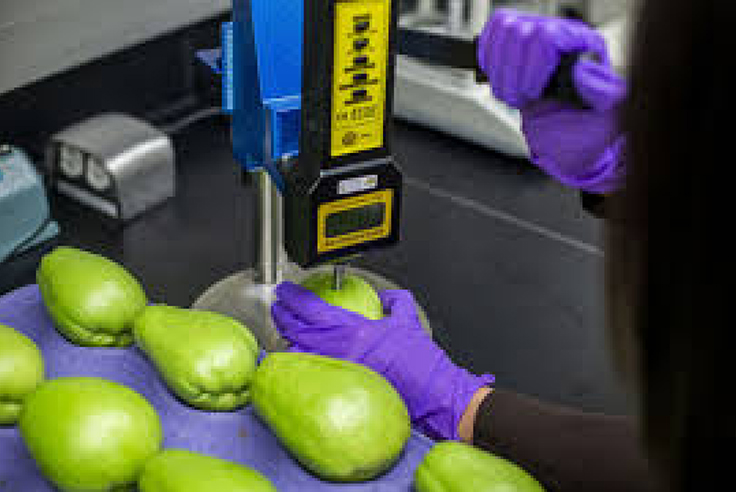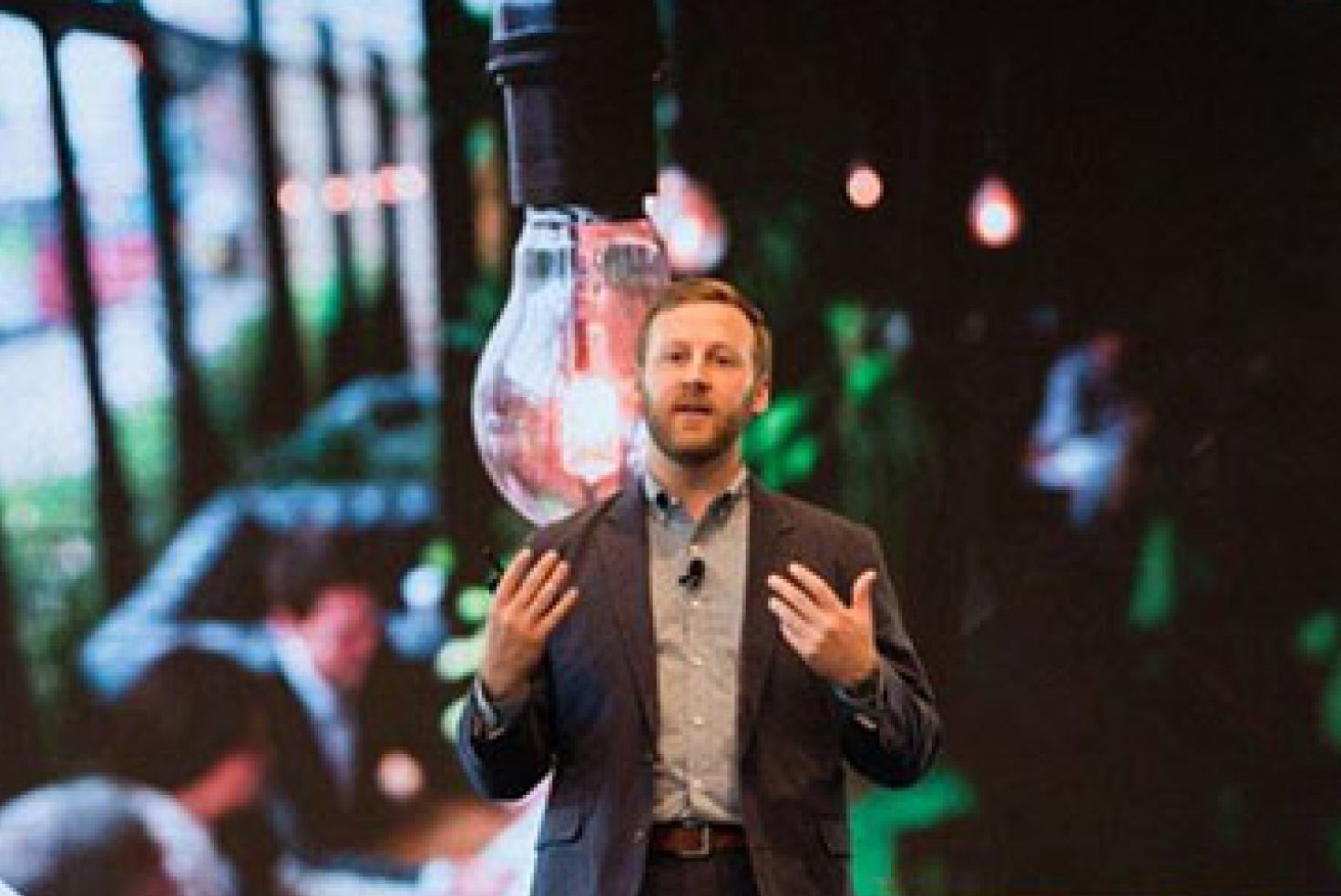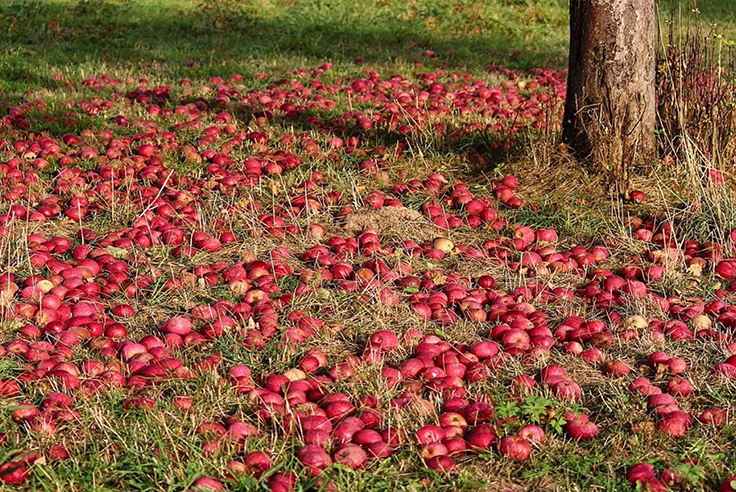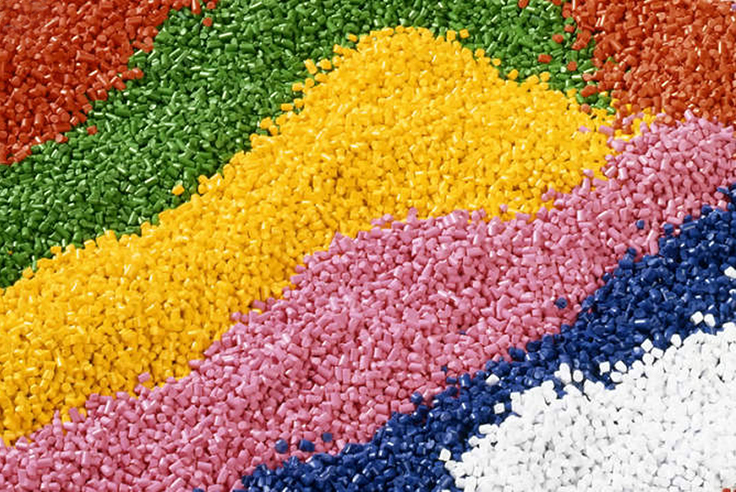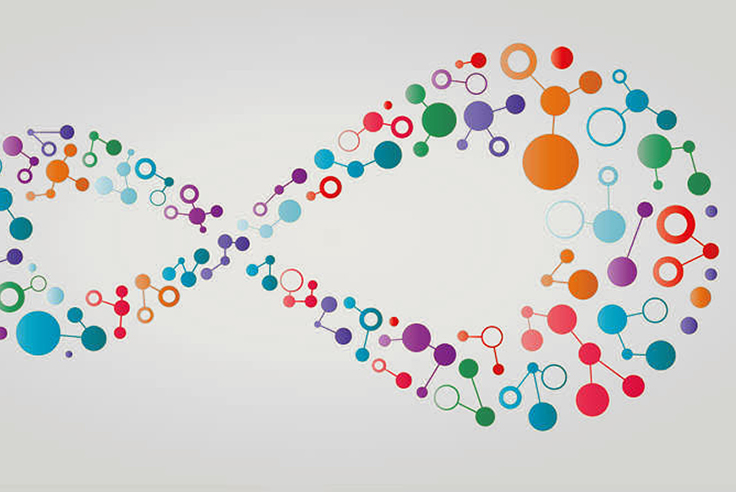Better Buildings: Key Drivers for Constructing a Circular Built Environment in the U.S.
The Closed Loop Foundation, in partnership with 3M explores the landscape of circularity in today’s U.S. built environment.
The built environment—those man-made structures where we live, work and play—casts a profound impact on our quality of life and well-being.
From the air we breathe within office buildings, to the urban heat islands trapping warmth in dense cities, to a community’s resilience against extreme weather—the materials composing our buildings shape our surroundings in myriad ways. Yet in our current linear “take-make-waste” economy, these same materials bear a tremendous environmental cost, responsible for 39% of global energy related carbon emissions—28% from operational emissions and 11% specifically tied to materials and construction. Understandably, a strong focus persists in prioritizing Heating, Ventilation and Air Conditioning (HVAC) systems and insulation as key means of curbing emissions from building operations. This report, however, focuses on the materiality of buildings and their lifecycles—a crucial issue, as construction and demolition waste constitute a staggering 30-40% of all globally generated solid waste, with a shocking 30% of materials that are delivered to building sites ultimately ending up discarded as waste.
To illustrate what a path forward could look like, this report provides a snapshot of the built environment in the U.S. today, a summary of circular economy principles that can be applied to drive progress and a call to action for stakeholders across the U.S. building industry.
A Vision For A Circular Built Environment
A circular built environment requires rethinking the entire lifecycle of a building. Explore our report to learn about the nuances of maximizing the longevity of our built environment through examples drawn from across diverse U.S. contexts.

Anaerobic Digestion and Compostable Packaging
The Closed Loop Foundation, in partnership with the Danaher Foundation explores the efficacy of large-scale anaerobic digestion facilities’ ability to breakdown compostable packaging.
While we know certified, food-contact compostable packaging containing food scraps can be properly recovered in composting facilities, some U.S. municipalities rely on anaerobic digestion (AD) for organic waste management. This prompts a crucial question: can large-scale AD facilities in the U.S. also effectively handle compostable packaging?
To help answer this question, the Composting Consortium, managed by the Center for the Circular Economy at Closed Loop Partners, conducted a study published by the Closed Loop Foundation to assess the extent to which compostable packaging is currently processed within existing large-scale AD infrastructure in the U.S. The analysis, done in partnership with BioCycle and Target Renewables, LLC., was focused on those facilities that process hundreds to thousands of tons of organic waste per day.
The findings of this study suggest that large-scale AD, in its current state in the U.S., may not be a suitable solution for processing food waste with compostable packaging. Given the nascency of industrial anaerobic digestion systems that process compostable packaging in the U.S., the Consortium connected industry learnings from the UK and European Union (EU) to the U.S. market. Markets like the European Union (EU) are leading the way in processing compostable packaging, particularly liner bags used in source-separated food waste collection. This success is attributed to their well-developed infrastructure for integrating anaerobic digestion (AD) and composting, allowing them to effectively manage the compostable packaging stream on a large scale.
What Can We Learn from European AD Markets?
While AD might not currently be a standalone solution in the U.S., Europe offers valuable insights for future development.
Using Hybrid Anaerobic Digestion
Show moreEuropean markets are initiating hybrid models that co-digest food waste and compostable packaging. These models maximize biogas production and facilitate subsequent composting of the digestate, overcoming limitations of wet mesophilic AD systems. While these hybrid systems can have higher capital and operating costs, they demonstrate the potential for maximizing both the economic and environmental benefits of organic waste recycling.
Creating Industry Collaborations
Show moreStrong partnerships among AD operators, composters and manufacturers are crucial in Europe. This collaboration fosters innovation in packaging design and pretreatment methods that align compostable packaging with AD recovery, ensuring smooth material flow and improving the entire organics management ecosystem. Supportive policies, including feedstock quality regulations and financial incentives for hybrid facilities, further incentivize adoption of these approaches.
Digestate Standards
Show moreUnlike the U.S., the UK and the European Union have established standards for digestate produced via anaerobic digestion of food waste and other feedstocks. The standards benefit end market development, especially with regard to quality assurance. The UK’s PAS 110 digestate quality standard, for example, specifies that input materials (feedstock) shall be “source segregated biowastes and/or source segregated biodegradable materials.” By this definition, compostable packaging is an acceptable input to a PAS 110-certified process. However, if such materials remain visible in whole or in part in digestate after AD, or post-AD composting, they would be considered contaminants and likely cause the digestate to fail. A hybrid model with back-end composting facilitates complete disintegration and thus compliance with the standard.
Assessing Molecular Recycling Technologies in the United States and Canada
Published by the Closed Loop Foundation, this report examines the economic, environmental and human health impacts of diverse molecular recycling technologies, assessing where they fit in a circular plastics economy.
Research Report 2021
Closed Loop Partners released a first-of-its-kind report evaluating the role of molecular recycling technologies in addressing plastic waste
Resource Library
Executive Summary
Highlighting ten key findings from our analysis of diverse molecular recycling technologies
Case Studies
Spotlighting best practices and lessons learned from molecular recycling companies active on-the-ground
Directory
Mapping molecular recycling companies operating across the globe
10 Key Findings
To address the plastics waste crisis, industries, brands, NGOs, policymakers and consumers must look beyond single-use plastic packaging.
Show more- The plastics waste challenge, which perpetuates the extraction of non-renewable resources, extends to the equally visible, but often overlooked, plastics used in healthcare, textiles and apparel, and electronics. These kinds of applications make up two-thirds of the plastics produced and will continue their linear path to landfill unless we build recovery pathways for all types and uses of plastics.
- We risk delaying a future free of plastic waste unless solutions that address the full range of plastics are considered. Those lost resources have serious consequences for our environment and economy.
A suite of upstream and downstream solutions are needed to solve for the diversity of plastic waste.
Show more- Only 9% of plastics produced have been recycled. No single sector, technology or approach can solve for the diversity of plastic waste in the system. A comprehensive approach to eliminate plastic waste includes upstream strategies like plastic use reduction through design innovation and the introduction of reuse systems at scale, downstream strategies including mechanical and molecular recycling, and policy interventions to prevent waste.
- Because of the complexity and diversity of the plastics waste challenge, dismissing any category of solution adds risks. Reduction should be prioritized. Scaling reuse systems to curb extraction is critical, just as recycling plays an important role for plastics that are at end-of-use. In this report, we focus on one downstream solution, molecular recycling.
“Molecular” or “advanced” recycling technologies can expand the scope of materials we can recycle, help preserve the value of resources in our economy, and bridge the gap between the supply and demand for high-quality recycled plastics, like food-grade plastic.
Show more- Molecular recycling is a diverse sector that encompassess dozens of technologies that use solvents, heat, enzymes, and even sound waves to purify or break down plastic waste to create polymers, monomers, oligomers or hydrocarbon products. The sector is made up of purification, depolymerization, and conversion technologies that can process a wide range of plastic waste including packaging, textiles, healthcare plastics, and wind turbine blades, addressing overlooked plastics that today do not have end-of-use recovery solutions. Molecular recycling technologies are not just packaging recycling solutions; their full potential extends to the diverse materials they can recover.
- The term “molecular recycling” is synonymous with the term “advanced recycling” and includes more commonly known “chemical recycling” technology processes like pyrolysis. However, the term “molecular recycling” is inclusive of other types of technology processes that do not leverage chemicals and instead use enzymes, soundwaves and other technology platforms that transform plastics.
- This early-stage industry is uniquely positioned to take in a wide range of contaminated plastic waste and purify the plastics or transform them at the molecular level so that outputs can be looped back into manufacturing without being downcycled. This is especially important because there is not enough supply to meet the demand for high-quality recycled plastics (e.g. foodgrade applications). Together with mechanical recycling, these two systems can symbiotically help decarbonize manufacturing and the plastics economy, and meet the demand for various grades of recycled plastic resin.
- Diverse stakeholders from petrochemical trade groups to environmental advocacy groups agree that plastics-to-fuel or plastic-to-energy (PTE) should not be considered recycling.
Integrating molecular recycling technologies into plastics recycling systems in the United States and Canada could double the amount of plastic packaging recycled compared to 2019 recycling rates, and generate up to $970 million dollars (USD) annually.
Show more- All nine companies in Closed L oop Partners’ study required some level of feedstock preparation (i.e. pre-processing). The majority of these nine companies across all three technology categories are paying suppliers for feedstock, thus bringing value to materials that have little value in the existing plastics recycling system.
- Purification and depolymerization technologies differentiate from mechanical recycling by their ability to remove chemical additives and color from plastic waste, producing like-new plastic polymers that can go into high-value cosmetic or foodgrade applications; this requires upstream suppliers to sort feedstock to a single resin. Conversion technologies can process plastic waste that is mixed or commingled with other waste materials (i.e biomass), which is more aligned to single-stream recycling and mixed waste realities.
- For this study, we modeled two scenarios to reach a packaging recycling goal of 30% across all resins and formats as an initial target; both scenarios did not divert material mechanical recycling is currently processing. Our analysis shows that a “mixed technology” approach that leverages all three kinds of molecular recycling technologies produces a better financial outcome for the existing plastics recycling system compared to a conversion only approach which requires less sortation. Investment into our collections and sortation infrastructure is a tide that lifts both mechanical recycling and molecular recycling and will allow a wider scope of plastic waste to be recycled.
The average carbon emissions from producing plastic through all three molecular recycling technology categories showed an improvement compared to corresponding virgin plastics systems, with environmental impacts varying within and across the technology categories.
Show more- In our study of nine companies, the highest-performing molecular recycling technologies demonstrate the role that technologies with a lower environmental impact than virgin production could play in decarbonizing our plastics economy by supporting the reduction of virgin plastic production, and helping make more recycled material available to manufacturing industries. Our study also found examples of technology processes that performed worse than virgin across greenhouse gas emissions and bluewater. Scaling molecular recycling technologies, particularly those intending to link up to plastics supply chains, will require comprehensive diligence by investors and supply chain partners to ensure that circular plastics supply chains are also meaningfully decarbonizing plastic supply chains.
- Molecular recycling can help mitigate climate change when it displaces the use of virgin plastics. The transition towards a circular future will rely upon the petrochemical industry shifting a significant proportion of their investment to solutions that address plastic waste, like molecular recycling, and shifting away from oil exploration and new extraction infrastructure.
- Environmental impact reductions (i.e. carbon emissions, energy, and bluewater) demonstrated today by molecular recycling technologies can be magnified with renewable energy since the majority of energy usage from molecular recycling is indirect energy use. Thus, renewable energy has the potential to further decrease the environmental impact of molecular recycling technologies and should be a critical component of any commercialization strategy for technology companies intending to participate in the circular plastics economy.
- In addition to key environmental metrics like energy use, greenhouse gas emissions, and water use, investors need to consider factors like the quality of outputs from specific processes and total material yields.
Molecular recycling technologies can reduce human health risks associated with virgin plastic production by avoiding the need for additional virgin chemicals to build back the plastic polymer.
Show more- In general, the less a polymer is broken down, the fewer steps are needed to build back the plastic polymer, reducing human health risks associated with the virgin chemicals used to build back the plastic polymer.
- By reducing virgin chemical use, molecular recycling can reduce the human health impacts associated with the virgin production of plastics. Those savings differ across technology types and the types of plastic feedstock they take in as well as the outputs they produce.
- The nuances among different molecular recycling technologies — and the varying feedstock different companies process — points to a need for nuance in regulation and permitting. Molecular recycling technologies are manufacturing facilities when they are not processing untreated waste and when they produce outputs that do not link to fuel or energy supply chains.
The trade-offs between purification, depolymerization, and conversion technologies relate to their commercial availability, feedstock requirements, material processing efficiency, and environmental and financial performance.
Show more- All three types of molecular recycling technologies have a role to play in a future circular economy because of their performance and the different types of hard-to-recycle plastics they can process. The appropriate solution(s) depend on the material make-up of the plastic wasteshed c, the degree of contamination and commingling in the wastestream, the capacity of the regional collection and sortation infrastructure to pre-process plastic waste, and local policy–all of which impact the technical and financial viability of any process.
- Conversion technologies can process the largest proportion of plastic packaging waste in the system and are the most commercially available for scaling. Today, conversion is the only viable downstream solution for some types of plastic waste (e.g. bulky rigids, some multilayer films, and wind turbines).
- Purification and depolymerization technologies are less commercially available than conversion technologies and their commercial success will rely on the ability to access or produce feedstock that is cleaner and more pre-processed. Our study suggests that purification and depolymerization technologies have the highest potential for favorable environmental and human health outcomes across all types of molecular recycling technologies evaluated.
- On average, the less a polymer is broken down in the recycling process the fewer mass losses occur along the journey to making plastic resin for packaging and products. Purification and depolymerization demonstrated the highest plastic mass yields, compared to conversion technologies. This directly correlates to the type of feedstock each technology group is processing: the cleaner and purer the feedstock, the greater plastic mass yield.
Closed Loop Partners’ evaluation checklist can help investors and corporate partners execute the comprehensive diligence an early-stage sector this complex requires.
Show more- Investors and industry partners should be prepared to jump into the technical nuances of this early-stage sector so that they support and scale best performing technologies that maximize value creation, sustainability, and circularity at the local level. Closed Loop Partners has developed an evaluation checklist with over 100 questions to support investors’ diligence process. To realize the potential of this sector and mitigate financial, environmental, and human health risks, policymakers, investors, and corporate actors need to support and incentivize the development and commercialization of molecular recycling technology in a way that ensures the industry is scaled in ways that are circular, safe, and sustainable. Closed Loop Partners has introduced a framework for investors which evaluates technologies according to four key factors: (1) technology viability; (2) financial viability; (3) impact measurement of environmental and human health impacts and a technology’s contribution to circularity; and (4) integration into local markets.
Brands can support the sustainable growth of the plastics recycling sector by stabilizing the demand for recycled plastics and investing across the entire recycling value chain.
Show more- Entering into long-term supplier contracts is a key step companies can take to act on their public commitments to using recycled plastic content.
- Technology is not a silver bullet. Scaling molecular recycling technologies that are safe, circular, and economically viable will require supporting investment into the existing collection and sortation infrastructure in the U.S. and Canada, as well as upstream solutions.
- Brands have an opportunity to collaborate across sectors and with peers to address multiple types of plastic waste (i.e. colored PET and polyester) to create new product standards that align and expedite the scale of recycled content end markets.
Policymakers can help expand the volume and types of plastics that are recycled and support a circular future for plastics by including molecular recycling in legislation that pertains to downstream material management and by setting regulatory guardrails that guide the sector’s development toward circular outcomes that decarbonize plastics production.
Show moreThe molecular recycling sector has historically been shaped by cultural and economic forces that drive toward linear outcomes like waste-to-fuel, but a collective desire for a waste-free future is now pushing the industry towards circularity.
Policies that support circular, safe, and sustainable downstream material management:
1. help stabilize the demand for recycled plastic (PCR) through recycled content mandates for products and packaging;
2. incorporate molecular recycling into extended producer responsibility legislation;
3. support decarbonization and circular outcomes and protect human health and communities;
4. provide financial incentives like tax credits that encourage upstream collaboration, investment into feedstock preprocessing, and investments in best performing molecular recycling operations.
Executive Summary
This executive summary provides a snapshot and high-level overview of the key findings in our report, Transitioning to a Circular System for Plastics: Assessing Molecular Recycling Technologies in the United States and Canada.
Case Studies
As part of this report, Transitioning to a Circular System for Plastics: Assessing Molecular Recycling Technologies in the United States and Canada, these case studies highlight best practices and lessons learned from molecular recycling companies advancing these technologies on-the-ground.
APK
How Molecular Recycling Companies are Meeting Safety Standards to Keep Plastics in Play
Brightmark
How Partnerships Between Advanced Recyclers and Material Recovery Facilities Are Strengthening the Plastics Recycling System
Carbios
How Molecular Recycling Can Create Backflows of Recycled Content from the Textile Industry Towards Packaging
Gr3n
How Collaboration Can Catalyze the Commercialization of Molecular Recycling Technologies
Green Mantra
Getting Creative: Novel Molecular Recycling Products Allow for Increased Resource Efficiency in New Sectors
JEPLAN
How Vertical Integration Opens Access to Hard-to-Recycle Plastic Inputs for Molecular Recycling
Plastic Energy
How Collaborations in the Molecular Recycling Space Can Drive Closed-Loop Plastics Supply Chains
PureCycle
How Strategic Investments Can Scale Emerging Molecular Recycling Technologies
Modularity
The Opportunities and Challenges in Developing Distributed Molecular Recycling Systems in a Circular Economy
Technology Directory
The companies featured in this directory include many of the molecular recycling solutions being explored and implemented in the market today––showcasing the range of applications that can be possible.
Appendix
Dig deeper into the details of this report, Transitioning to a Circular System for Plastics: Assessing Molecular Recycling Technologies in the United States and Canada.
Recycling Pilots in Puerto Rico
The Closed Loop Foundation, in partnership with the Coca-Cola Foundation, looks to build the circular economy in Puerto Rico.
Using Puerto Rico as a case study, the Closed Loop Foundation conducted research focused on materials management challenges. Island nations in particular face acute challenges on the climate crisis frontline, including distance from recycling markets and coastline proximity which can lead to ocean plastic pollution if materials are not managed properly. It’s critical that we keep valuable materials in manufacturing supply chains and out of our oceans.
Puerto Rico faces a host of well-documented challenges in its recycling and waste management system, including a lack of or aging infrastructure and difficult disposal conditions whereby many of its 29 landfills are operating below regulatory standards. Recently, catastrophic storms (Hurricanes Irma and Maria) and political and economic upheaval have put further strain on action toward more sustainable materials management. The confluence of these issues provided the opportunity to put circularity to the test.
As an island nation, uplifting the recycling system is critical
Quality recycling infrastructure yields environmental benefits (e.g., reducing leakage of plastics into the environment), preserves resources, and creates economic stability. Toward these goals, the Closed Loop Foundation (CLF) received a grant from The Coca-Cola Foundation to carry out a three-step approach to address recycling and materials challenges faced by Puerto Rico:
Conduct research and stakeholder outreach to understand the waste management system, material flows, available infrastructure, and bottlenecks to system improvements
Identify pilot-scale demonstration projects that can help fill knowledge gaps and address bottlenecks in the system
Identify actions that can substantially increase material recovery in the near and medium term
Ten different pilot projects were designed on the basis of the research and stakeholder outreach described earlier. We performed a decision analysis using the following criteria to narrow the list of projects:
- Scalability
- Executability
- Potential impact
- Sustainability (i.e., can the project sustain beyond the pilot period?)
- Budget
Based on these five criteria, the list of potential projects was narrowed to two:
Pilot 1: Recicla Más, Recicla Mejor
A digital outreach campaign in Guaynabo, a northern Puerto Rican municipality, to increase the quality and quantity of recyclables placed curbside.
This pilot was informed by our research and multiple stakeholder meetings that stressed the importance of educating the public to improve the quality and amount of recyclables collected curbside. Material characterization efforts indicated contamination rates of 50%+ being delivered from some municipalities.
The program was designed to (i) raise awareness of the recycling program, (ii) instruct residents to alter behavior to recycle more and recycle only acceptable materials, and (iii) uncover insights on behavior, sentiment regarding the recycling program, and related challenges.
Launched in June of 2019, the campaign targeted approximately 700 households across three Guaynabo neighborhoods. It included an all-digital ad campaign, a Facebook page, and mobile-enabled landing page. Additional integrated resources included direct email outreach and a linked survey.
Pilot 2: Online Recycling Education Platform
The free tool is focused on a recycling curriculum and is targeted toward municipal recycling coordinators and directors in Puerto Rico.
After engaging with stakeholders, we learned that municipal recycling coordinators needed support to help carry out the critical functions that fall under their responsibility. The aim of the pilot was to bolster institutional knowledge, development and retention of municipal recycling coordinators in Puerto Rico.
Creation of a new online learning platform was led by the selected pilot partner, Puerto Rico Science, Technology, and Research Trust. The platform integrates multiple types of curated online, on-demand content and includes a certificate program.
Topics include:
- Key waste and recycling definitions, system components, and technologies
- Waste management frameworks including the circular economy and the waste management hierarchy
- Educational approaches for recycling programs
Download the English version of the report here
Descargue la versión en Español del informe aquí
Pro-Recycling Narrative
Closed Loop Foundation and its partners engaged M+R in a multi-phase effort to drive a positive narrative about recycling in the media.
In early 2017, Closed Loop Foundation and its partners engaged M+R in a multi-phase effort to drive a positive narrative about recycling in the media. During the first phase of work, M+R began with a discovery process and developed a message architecture designed to reach four key audiences: local government officials; investors, recycling business owners, and entrepreneurs; c-suite executives; and consumers. In the second phase of work, M+R built a communications plan and implemented an earned media strategy to amplify these messages and the stories of spokespeople in the recycling industry identified by the partners.
Recommendations for future iterations of this work include:
- Continuing to cultivate spokespeople who can talk about complex issues in ways that are compelling and easy to understand for the general public; who feel comfortable delivering key messages; and who can stay cool under pressure and make themselves available for press opportunities;
- Pursuing pitches that are timely, relevant to reporters’ interests, and offer information that is new and compelling. It’s also important to tap into larger media narratives and have an effective rapid response operation in place in order to capitalize on opportunities when they arise; and
- Continuing to test a range of message frames including and in addition to the innovation messaging that worked particularly well during our engagement.
The coalition came away with some clear wins, which suggests that this work could be replicated in the future to even greater success. Here is a snapshot of key accomplishments:
- Placed a letter to the editor in USA Today authored by Lakeshore Recycling’s CEO Alan Handley, highlighting the profitability of recycling;
- Placed a letter to the editor in Governing magazine authored by Robert Knecht, public works director for the City of Memphis, emphasizing the benefits of recycling for municipalities;
- Placed an op-ed in The Hill authored by Ron Gonen, co-founder and managing partner of Closed Loop Partners, focused on potential budget cuts to federal recycling programs;
- Secured positive coverage of AMP Robotics and its mechanical sorting arm “Clarke” in numerous outlets in Colorado, including Boulder Weekly, ColoradoBiz, and Colorado Public Radio;
- Proactive outreach in Colorado led to not only an increase in pro-recycling stories in the state, but also helped with the dissemination of positive messages about recycling as a means to counter the false narrative that recycling “doesn’t work.”
- Local stories were also picked up organically by national outlets (for example, Engadget covered AMP Robotics after finding out about them through the Colorado Public Radio story). This shows that the message frames have the ability to break-through beyond the state and regional level.
- Secured story in Bloomberg BNA about e-waste recycling, which included an interview with spokesperson John Shegerian, founder of Electronic Recyclers International;
- Placed a letter to the editor in MinnPost authored by Keefe Harrison, CEO of The Recycling Partnership emphasizing the importance of Rep. Keith Ellison’s zero waste legislation; and
- Placed a letter to the editor in The Daily Iowan by Kathy Morris, director of the Waste Commission of Scott County, IA, focused on the importance of recycling to help combat climate change.
Media Coverage

The Telegraph
‘I made £20,000 renting out my clothes’
After a backlash against ‘fast fashion’, renting…

Inc Magazine
Top Female Founders on the One Move That Made Their…
Sometimes, it involves an unexpected pivot. Other times,…

Drapers
DAI Raises £1.7m in Crowdfunding Campaign
Womenswear brand Dai has raised $2m (£1.73m) from…

Refinery29
The Resale Industry Is Changing — Here’s What to…
One of my favorite feelings in the world is the burst…

Elle
3 Women Making Waves In Their Fields Share Their Biggest…
From overcoming challenges to making positive changes…

Vogue Business
This Vogue Editor Rented Her Whole Wardrobe For A Weekend…
How do you fancy getting your hands on the largest…

The New York Times
Purging Old Clothes? Here’s How to Responsibly Donate…
If you have piles of old clothes and shoes languishing…

Financial Times
Fashion for Rent: The New Style of Ethical Dressing 
Don’t buy it when you can hire it! How sharing apps…

Inc Magazine
Why This Founder Chose to Change Her Whole Business…
For Days founder Kristy Caylor had to make a tough…

Vogue Business
Circular Fashion: Exciting to Talk About, Tough to…
If fashion wants to be circular, it needs to master…

Forbes
Evrnu’s Recycled Waste Fiber Launches Today, And…
It’s much-maligned by many fashion industry stakeholders…

Business of Fashion
Rental Platform By Rotation Raises $3 Million
Investors are eyeing the peer-to-peer model in rental…
Investment Opportunities in Film Plastic Recycling
Closed Loop Foundation partnered with RSE on a national study to understand bottlenecks holding back recycling of post consumer LDPE film and multi-laminate film packaging recycling and where investment is needed.
Bags and wraps are frequently made of a single plastic type. Alternatively, flexible packaging is commonly made from several layers of different types of plastics bonded together, with each layer serving a function to protect and keep the contents fresh, which most often is food. Because different types of plastics are not compatible with each other when melted down together, this presents recycling challenges for flexible packaging because it is not currently technically possible or feasible to separate the materials in the different bonded layers.
The good news is that more than half of film is polyethylene film, which is recyclable today. Furthermore, the ability to recycle multilayer films that are primarily made from polypropylene with polyethylene layers is promising. For the other film types, changes in package design and continued research into new recycling technologies can minimize the quantity of films that are not yet able to be recycled.
- There are a number of areas where the investment community can help to improve film recycling in the U.S. These areas include expanding reclamation capacity and growing recycled content product manufacturing.
- A number of organizations have initiatives underway to improve film recycling, in some cases duplicating each other’s efforts, whereas in other cases no one is addressing other obstacles. Coordinating efforts among stakeholders will help to advance film recycling.
- Film recycling loans, grants, and venture capital investments are all needed to overcome film recycling obstacles.
- More than half of polyethylene film collected in the U.S. for recycling is exported, although demand from export markets has begun to decline and this is expected to be a long-term trend. Thus it is essential that the U.S. expand its infrastructure to sort, reclaim, and manufacturing products using recycled plastic PE film.
- Reclaimers and markets for non-polyethylene film are virtually non-existent. There is a need to develop a recycling infrastructure and recycling markets for the polypropylene-based film portion at a minimum, in order for comprehensive film recycling to occur.
- It is important for film manufacturers to design film products and packages for recycling so that the economics of comprehensive film collection and recycling programs can improve. This includes designing products that are compatible with the polyethylene recycling stream.
Media Coverage

The Telegraph
‘I made £20,000 renting out my clothes’
After a backlash against ‘fast fashion’, renting…

Inc Magazine
Top Female Founders on the One Move That Made Their…
Sometimes, it involves an unexpected pivot. Other times,…

Drapers
DAI Raises £1.7m in Crowdfunding Campaign
Womenswear brand Dai has raised $2m (£1.73m) from…

Refinery29
The Resale Industry Is Changing — Here’s What to…
One of my favorite feelings in the world is the burst…

Elle
3 Women Making Waves In Their Fields Share Their Biggest…
From overcoming challenges to making positive changes…

Vogue Business
This Vogue Editor Rented Her Whole Wardrobe For A Weekend…
How do you fancy getting your hands on the largest…

The New York Times
Purging Old Clothes? Here’s How to Responsibly Donate…
If you have piles of old clothes and shoes languishing…

Financial Times
Fashion for Rent: The New Style of Ethical Dressing 
Don’t buy it when you can hire it! How sharing apps…

Inc Magazine
Why This Founder Chose to Change Her Whole Business…
For Days founder Kristy Caylor had to make a tough…

Vogue Business
Circular Fashion: Exciting to Talk About, Tough to…
If fashion wants to be circular, it needs to master…

Forbes
Evrnu’s Recycled Waste Fiber Launches Today, And…
It’s much-maligned by many fashion industry stakeholders…

Business of Fashion
Rental Platform By Rotation Raises $3 Million
Investors are eyeing the peer-to-peer model in rental…
Food Waste Solution Search
Solution Search for Food Waste Innovators
Closed Loop Foundation ran a solution search for food waste innovations to provide seed capital to support winning companies and their projects that have the potential to reduce food waste at scale.
Food Waste Solution Search Grantees
Full Cycle Bioplastics
Creates a circular-economy solution for food waste and plastic pollution by converting post consumer food waste into a compostable bioplastic.
Vermont Natural Ag Products
Recaptures renewable thermal energy created in its compost system to reduce energy consumption, time and therefore cost of creating the compost product.
Hold That Tray
Education, diversion, and combined anaerobic digestion/composting to highlight the value in food not served or wasted.
ALL IN Alameda
Comprehensive social enterprise to efficiently recover wasted food from retail
Renewal Mill
Harvests undervalued byproducts from current food production processes and upcycles them into high – value nutritious and wholesome products
BioWorks Energy/Flint, MI
Technology to make food waste into a sludge that can be incorporated into waste water digesters.
Georgia Tech
Add value to food waste nutrients by converting these nutrients into algal meal fish feed for aquaponic urban farming systems positioned at schools.
Indiana Recycling Coalition
Building a system solution for restaurant and retail composting by building a collection and processing system.
ReFed Report
Closed Loop Foundation is a leading supporter of ReFed, a report determining food waste solutions based on their ability to merge strong economic returns with optimal social and environmental benefits.
Every year, American consumers, businesses, and farms spends $218 billion a year, or 1.3% of GDP, growing, processing, transporting, and disposing of food that is never eaten. That’s 52 million tons of food sent to landfill annually, plus another 10 million tons that is discarded or left unharvested on farms. Meanwhile, one out of seven people in America are food insecure.
ReFED is a collaboration of over 50 business, nonprofit, foundation, and government leaders committed to reducing food waste in the United States. ReFED seeks to unlock new philanthropic and investment capital, along with technology, business, and policy innovation, which is projected to catalyze tens of thousands of new jobs, recover billions of meals annually for the hungry, and reduce national water use and greenhouse gas emissions. ReFED was formed in early 2015 to create The Roadmap to Reduce U.S. Food Waste, the first ever national economic study and action plan driven by a multi-stakeholder group committed to tackling food waste at scale.
Statistics
Food waste consumes 21% of all freshwater
Food waste consumes 19% of all fertilizer
Food waste consumes 18% of cropland
Food waste consumes 21% of landfill volume
ReFED’s Work
ReFED has identified 27 of the best opportunities to reduce food waste through a detailed economic analysis. The solutions were analyzed using the EPA Food Recovery Hierarchy — which prioritizes prevention first, then recovery, and finally recycling — as a starting point. Additional filters of economic value and feasibility were incorporated to understand the potential for scaling solutions.
Prevention is the first step in reducing the amount of waste being produced
- ReFED identified 12 solutions in the prevention phase to reduce food waste including: standardized date labeling, consumer education campaigns, packaging adjustments, spoilage prevention packaging, waste tracking and analytics, trayless dining, smaller plates, cold-chain management, manufacturing line optimization, improved inventory management, produce specification standards and secondary resellers.
- The prevention phase is where we see the highest financial benefits and total amount of water saved among the 27 opportunities to reduce food waste
Recovery is the second step in developing solutions for the redistribution of food to people in need
- ReFED identified 7 solutions in the recovery phase to reduce food waste including: donation matching software, standardized donation regulation, donation liability education, value-added processing, donation storage and handling, donation transportation and donation tax incentives.
- The recovery phase is where we see the highest number of meals recovered among the 27 opportunities to reduce food waste.
Recycling is the final step in developing solutions for the repurposing of food waste as energy, agricultural and other products
- ReFED identified 8 solutions in the recycling phase to reduce food waste including: centralized composting, centralized anaerobic digestion (AD), community composting, water resources recovery facility with AD, home composting, animal feed, in-vessel composting and commercial greywater aerobic digestors.
- The recovery phase is where we see the highest amount of waste diverted and jobs created among the 27 opportunities to reduce food waste.
Film Recycling Solution Search
Solution Search for Film Recyclers
Closed Loop Foundation ran a solution search for innovators in the film recycling space. Drought Diet Products was announced as an awardee, using post-consumer film plastic feedstock in its irrigation piping products.
Food Waste Solution Search Grantees
Full Cycle Bioplastics
Creates a circular-economy solution for food waste and plastic pollution by converting post consumer food waste into a compostable bioplastic.
Vermont Natural Ag Products
Recaptures renewable thermal energy created in its compost system to reduce energy consumption, time and therefore cost of creating the compost product.
Hold That Tray
Education, diversion, and combined anaerobic digestion/composting to highlight the value in food not served or wasted.
ALL IN Alameda
Comprehensive social enterprise to efficiently recover wasted food from retail
Renewal Mill
Harvests undervalued byproducts from current food production processes and upcycles them into high – value nutritious and wholesome products
BioWorks Energy/Flint, MI
Technology to make food waste into a sludge that can be incorporated into waste water digesters.
Georgia Tech
Add value to food waste nutrients by converting these nutrients into algal meal fish feed for aquaponic urban farming systems positioned at schools.
Indiana Recycling Coalition
Building a system solution for restaurant and retail composting by building a collection and processing system.
Capital Landscape Study
Understanding the social, environmental and economic benefits of the circular supply chain model.
The Closed Loop Fund was created to catalyze investment through the deployment of catalytic capital to scalable public and private models and innovations within circular supply chains. Our unique approach is helping to grow innovations and scale successful business models in the circular supply chain.
Statistics
In the US, municipalities are paying more than $5 billion a year to landfill recyclables, food, clothing and electronics
$80-$120 billion of economic value from plastic packaging material is lost each year
$2 trillion in annual US revenues generated by circular manufacturing
Our Work
In 2017, Closed Loop Partners and Closed Loop Foundation conducted a study of the capital landscape supporting circular supply chains in North America. We looked at recent trends in investment activity, unmet demand, nearterm forecasts, and projections to achieve a fully circular infrastructure by 2030.
Through a series of surveys, interviews, and analyses of third-party data, we have gained several key insights about where capital is – and is not yet – flowing. Findings represent data from more than 130 municipalities, 440 private companies, and 260 investors, in addition to numerous experts who have advised us throughout this process. The research was conducted by Closed Loop Foundation with support from the Goldman Sachs Center for Environmental Markets and Wells Fargo Foundation.
The Cost of Linear Models
- Linear supply chains cost us too much. In the US, municipalities are paying more than $5 billion a year to landfill recyclables, food, clothing and electronics. Globally, $80-$120 billion of economic value from plastic packaging material is lost each year.
- Underpinning the linear economy is investment capital. In our research, we found approximately $10 billion a year in relevant deals, though much of it is supporting this linear infrastructure.
The Upside: Transitioning From a Linear to a Circular Supply Chain
We are missing a tremendous opportunity to unlock trillions in economic value and create a lasting positive impact on the environment. In our analysis, the upside of building a circular supply chain has dramatic social, environmental, and economic benefits, including:
- 30 million more households with access to convenient recycling
- 80 million tons of material recovered from residential single stream recycling – a lift of 4x
- 250-350 million metric tons of CO2 equivalent reduced
- $7 billion in new revenue opportunities from recycling for cities and recyclers
- Innovation in processing technologies and business models
- $2 trillion in annual US revenues generated by circular manufacturing
The Barriers to Investment and the Role to Catalytic Capital
With $10 billion a year in investment dollars supporting the old linear model, too much capital is waiting on the sidelines. Why? In more than 20 interviews of investors, fund managers and advisors, we heard several themes:
- Private capital lacks sightlines across the system
- The supply side is controlled by a few players
- There is too much volatility in commodities markets
- Capital seekers lack longer-term offtake agreements
Some mainstream investors have already figured out how to mitigate these risks and find value in circular supply chain opportunities. At the same time, “catalytic” concessionary capital can play an important role in de-risking investments, proving business models, and stimulating even more investment.Other supports, including subsidized R&D, long-term offtake agreements and price floors, loan guarantees, and green procurement or codes, can also help drive additional investment.

